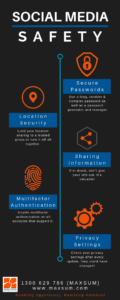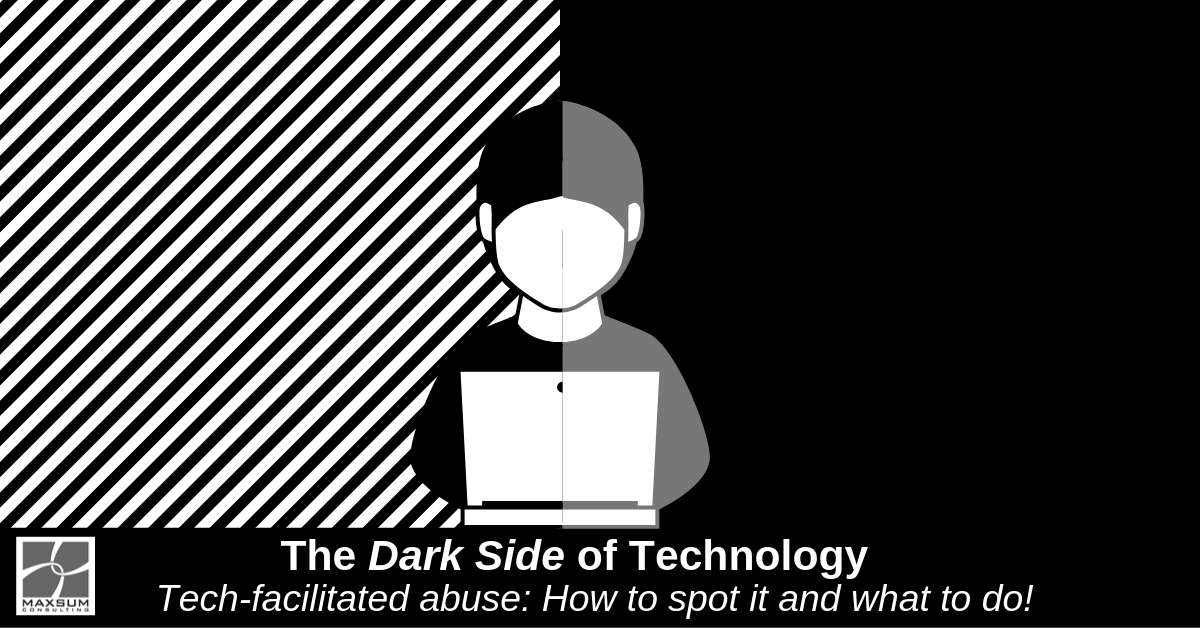Technology Facilitated Abuse – how to spot it and what to do!
We all love social media, right? But while you’re happily scrolling through memes, hash tagging and trying out filters, some people are experiencing the sinister side of social media and today’s technology. Did you know, for example, that
- 1 in 5 women are the victim of image abuse?
- a study involving 152 domestic violence caseworkers and 46 victims in Victoria found that clients had experienced technology facilitated abuse in 98% of cases?
- 1 in 4 indigenous women are the victim of image abuse?
Technology facilitated abuse (TFA) is something that can happen to anyone and as with any type of abuse, TFA is serious and in extreme cases can have psychological, reputational, financial and life-threatening costs.
The channels for abuse are virtually unlimited, from a hacked social media account to drone surveillance, making tech-facilitated abuse a new form of domestic/societal violence we need to talk about.
So, what is TFA?
Technology facilitated abuse (TFA) is when technology is used as a vehicle to frighten, harass, threaten, intimidate, monitor or control an individual.
Often times, tech-facilitated abuse leads to image-based abuse whereby private, intimate, nude or sexual content is shared or threatened to be shared without consent. And if you think for a moment that this couldn’t happen to you because you don’t share that kind of content, then think again! Image-based abuse can involve real or even altered content, including drawn images and deep faked material, so chances are, even if it doesn’t exist it can be fabricated.
What does TFA look like?
If you are female, a student, a migrant or gender diverse, then you are up to twice as likely to encounter TFA. On one end of the scale the abuse has taken the form of hacked email accounts or abusive comments on social media. Whereas at the more extreme end of things, there have even been cases where small remote devices have been fitted to track a vehicles GPS and cut the fuel line on cue. And let’s not forget the use of deepfake technology to cause reputational damage; you might not have said it or done it, but the internet has “proof” that you did…. Remember that Obama clip?
A case of FOMO or Oh No? How to spot TFA
It turns out TFA is extremely common, and if you fall into one of the most targeted groups, then it’s likely you’ve experienced it to some degree. Maybe it hasn’t been as serious as having drones follow you around or GPS trackers in your car, but perhaps you’ve had a possessive friend or partner make you feel uncomfortable via messaging or social media.
Do you have a clingy friend that comments on all your social check-ins? What could be dismissed as a simple case of FOMO may be TFA. Is this person showing up unexpectedly in places you’ve checked into? Do they monitor where you appear on the Snap Map? Maybe it’s time to take things more seriously…
It might be TFA if:
- Someone is making you uncomfortable online
- You are receiving abusive messages, comments, images or content
- You feel stressed when using your phone or the internet
- You notice someone is keeping track of your location or activities
- Someone has private information you didn’t share with them (they may have obtained this information from spyware or webcams.)
- You receive notification about failed log-in attempts or password changes on your account.
I think it might be technology facilitated abuse, what do I do now?
If you suspect someone is crossing boundaries, there are a few things you can do to safeguard your cyber and personal security:
- If it is safe to do so change your passwords.
- Enable Multi-factor authentication (MFA) on your accounts and request notifications for unrecognised log-in attempts.
Note: In some cases, it is best to use a computer that your abuser doesn’t have access to if you suspect that your personal devices are being monitored. Try going to a friend’s house and borrowing their computer or using a public library.
- Keep an eye out for any apps you don’t remember downloading. Spyware can sometimes be disguised as other, seemingly harmless apps such as calculators or world clocks.
- Check your privacy settings on your devices, apps and accounts, recheck the settings after every update.
- Limit the types of information you share with people online and in online calendars.
- Get your car checked by a mechanic for any GPS tracking devices. This one might sound extreme but with the easy accessibility of simple tracking devices this is becoming increasingly common.
- Place a sticker over your webcam if you suspect it may be hacked.
- If it is safe to do so, tell someone you trust and contact the police or help service.
Remember, be alert to anyone who you feel may be keeping tabs on you or behaving inappropriately. You don’t have to share information with people if you don’t want to. Be mindful that if you share sensitive details with someone, what they do with it after the fact is ultimately out of your control. And if someone is acting out of line, set boundaries from the beginning, take actions to safeguard your security, and contact the police or help services if things escalate.
For advice, tools and resources on eSafety for all Australians, visit the Office of the eSafety Commisioner at: https://www.esafety.gov.au/



